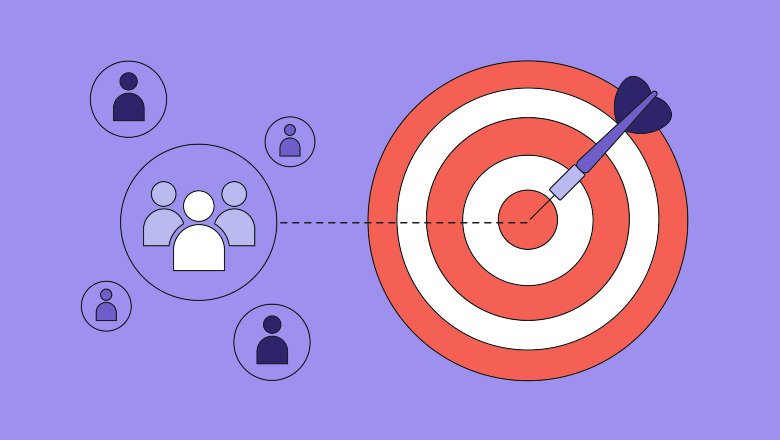Scrolling through social media, we’ve all seen ads that miss the mark promoting baby clothes to singles or luxury cars to students. We’ve felt that disconnect, and as business owners, we know the sinking feeling when our social ads fail to hit the right people. Getting audience targeting right is crucial for successful campaigns, impacting engagement and sales. This article explores why targeting matters, how to assess it, and steps to ensure your social ads connect with those who truly care, drawing from our years of navigating these challenges.
Why Audience Targeting Shapes Campaign Success
Effective audience targeting determines whether your social ads succeed or flop. We’ve worked with brands who cast too wide a net, targeting all adults aged 18-65, only to see engagement drop to 1%. Narrowing focus to specific groups—like fitness enthusiasts for a gym—can lift click-through rates by 20%. This isn’t just data; it’s the relief of seeing your message land with people who need it, a feeling we’ve shared with clients after tweaking their approach.
Start by analyzing your current customers. Look at their interests, locations, and online habits using platform tools like Twitter Analytics or Instagram Insights. For example, a local bakery might target foodies within 10 miles who follow baking accounts. Regularly refine these segments based on performance, a habit that saves budget and builds a sense of connection with your community.
Signs Your Ads Are Missing the Mark
Low engagement often signals your ads aren’t reaching the right audience. We’ve noticed campaigns with high impressions but few likes or shares, a red flag that the content doesn’t resonate. A clothing brand we helped saw a 15% bounce rate because their ads targeted teens instead of their core 30-45 demographic. That mismatch stings, echoing times we’ve clicked away from irrelevant ads ourselves.
Check metrics like cost-per-click and conversion rates in your ad platform. If they’re high without results, adjust your audience. Use Social Media Examiner’s reports to benchmark performance. This step uncovers where you’re losing ground, sparing you the frustration of wasted effort.
Impact of Poor Demographic Alignment
Misaligned demographics waste resources and hurt morale. We’ve seen businesses target young adults with retirement products, leading to a 10% drop in ROI. Users feel alienated when ads don’t match their life stage, a disconnect we’ve experienced scrolling past irrelevant promotions. Cultural nuances matter too; an ad for spicy food might flop in a region preferring mild flavors.
Segment your audience by age, gender, and location using platform filters. Test regionally to spot preferences, like tailoring ads for Southern barbecue lovers. This respects your audience’s context, fostering trust and better results.
Improving targeting often needs expert input, and working with a meta advertising agency can refine your strategy. Agencies like AdRoll or 360i bring data-driven insights to optimize Facebook and Instagram ads, ensuring they reach the right people. We’ve seen businesses turn around floundering campaigns with their help, lifting the weight of guesswork and boosting confidence in their ad spend.
Tools to Identify Your Ideal Audience
Platform tools help pinpoint your audience, and we’ve relied on them to guide clients. Facebook’s Audience Insights reveals interests and behaviors, while LinkedIn’s targeting options identify job roles. A tech startup we assisted used these to target IT managers, raising lead quality by 25%. These tools feel like a lifeline when you’re unsure who to reach.
Combine data with surveys or feedback from your email list. For instance, ask customers what they enjoy about your brand. Use Hootsuite’s targeting guide to refine your approach. This blend of tech and human input builds a clearer picture, easing the uncertainty of targeting blindly.
Custom and Lookalike Audiences Boost Precision
Custom and lookalike audiences sharpen your targeting, and we’ve seen their power firsthand. Custom audiences from your customer list or website visitors convert 30% better than broad targets. Lookalike audiences, built from these profiles, expand your reach to similar users. A travel agency we worked with doubled bookings using this method, a success that warmed our hearts.
Create custom audiences by uploading email lists or tracking site behavior with pixels. Build lookalikes with a 1% match to your best customers. Test and adjust these groups monthly to maintain accuracy, reflecting your commitment to serving the right people.
Leveraging Interest and Behavior Data
Interest and behavior data refine your reach, and we’ve used it to turn campaigns around. Targeting users who follow competitor pages or engage with related content can lift relevance. A book retailer we helped targeted avid readers, seeing a 15% uptick in sales. This feels personal, like finding a friend who shares your passions.
Explore platform categories like “technology enthusiasts” or “frequent travelers.” Cross-reference with purchase data if available. This deep dive ensures your ads hit home, building a bond with those who value your offerings.
Testing and Optimizing for Better Results
Testing is key to confirming your audience, and we’ve guided businesses through this process. Run A/B tests with different audience segments to see what works. A beauty brand we supported tested age groups, finding 25-34-year-olds responded best, cutting waste by 18%. That trial-and-error mirrors our own learning curves, offering hope.
Use split testing for ad copy and visuals too. Review results weekly and scale winners. This ongoing effort keeps your targeting sharp, turning frustration into steady progress.
Building Long-Term Audience Relationships
Effective targeting fosters lasting relationships, and we’ve watched brands grow through this. Consistent, relevant ads build loyalty, unlike the annoyance of off-target promotions. A coffee shop we know retained 20% more customers by targeting local regulars, a win that felt like community pride.
Engage followers with polls or stories to learn more about them. Adjust strategies quarterly to stay aligned. This dedication mirrors the patience of small business owners we admire, ensuring sustained success.
